Dee Estuary Birding
Monthly Newsletter...
October 2022 Newsletter
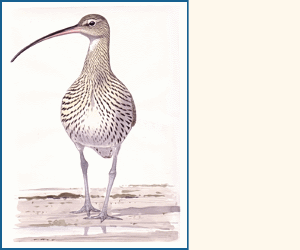
Species Spotlight - Curlew
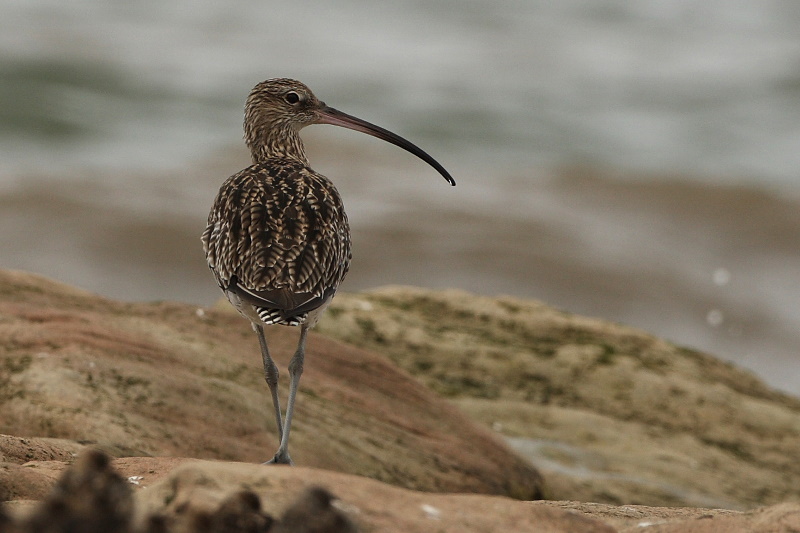
The Eurasian Curlew (Numenius arquata)
is in trouble with long-term declines right across it's range, but
particularly in the British Isles. In Ireland, the loss of 95% of
breeding Curlews since the 1970s is a shocking statistic. But the
United
Kingdom is still a vitally important area for this species and
currently holds 58,500 breeding pairs, which is a quarter of the total
population, as well as 125,000 wintering birds. Thus the UK is of very
high global importance for Curlews, and I quote Brown et al. "the
Curlew should be considered the UK's highest conservation priority bird
species". That was written in 2015 and a lot of research and practical
work has been carried out since, see the Reference/Further Reading
Sections below for details.
Here in Cheshire and Wirral we still have a small
population of breeding Curlews but it is our two estuaries which are of
National Importance for this species and whose combined total
approaches that for the whole of the Wash. In addition there are
several hundred Curlews which appear to spend the whole of the
non-breeding season inland. So what follows is a summary of the status
of the Curlew in Cheshire and Wirral whilst putting it into a national
and
historical perspective, plus some details of their movements to and
from our area.
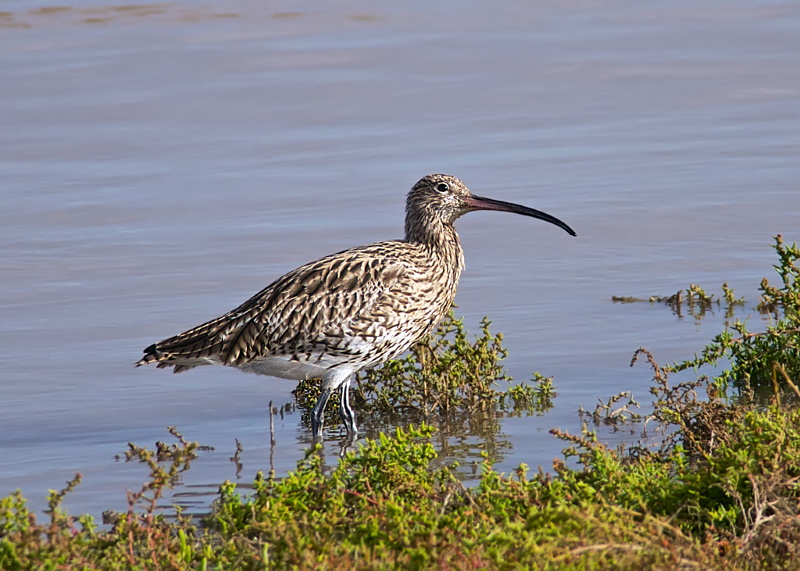
Breeding
The Cheshire and Wirral Atlas (published in 2008)
says "In the last century, the Curlew has waxed and waned as a breeding
bird in the county, but is now definitely waning", and that is
undoubtedly still true today. There was a time, from around 1940 to
1965, when breeding Curlews increased significantly and they could be
found in much of central and south-west Cheshire as well as the eastern
hills but since then there has been a steady decline. The Atlas states
that the number of tetrads with confirmed or probable breeding had
dropped to 67 from 149 twenty years previously, and the number of
breeding birds to 180 from around 300 pairs previously. The map in the
Atlas shows that most of the remaining breeding birds can be found all
along the eastern hills with all the confirmed breeding tetrads close
to the Derbyshire border, in addition the map also showed there
were still a few pairs breeding in the south of the county close to the
Welsh and Shropshire borders.
The current status of breeding Curlew in Cheshire is unclear as records
in recent Cheshire and Wirral Bird Reports have been sparse, to say the
least. The last survey work mentioned was undertaken by Natural England
in 2015 - ".... survey located three breeding pairs at Sparbent and
four pairs at Tagsclough Hill. Display and singing were also noted at:
Cat & Fiddle; Danebower; Lyme Park CP; Macclesfield Forest."
Reports since then typically only mention two or three breeding records
annually
and this surely vastly under records the true figure.
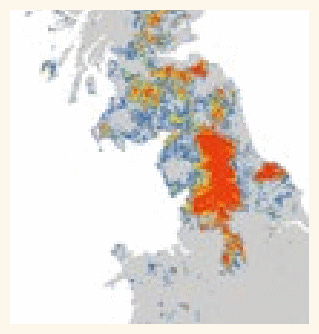
The birds breeding in Cheshire are on the south-west edge of much
larger numbers. It is estimated that 30,000 pairs breed in England of
which the large majority are to the east and north of our eastern
hills, namely in: Peak District National Park; Forest of Bowland;
Yorkshire Dales National Park; North York Moors National Park and North
Pennines AONB.
The map (left)
shows the Curlew distribution map for northern England (with parts of
Scotland and Wales) as published in the BTO Breeding Bird Survey 2021
Report. The highest relative abundances are represented by red, then in
declining abundances by orange, yellow,blue and grey.
Two bits of good news to finish with. Firstly is
another quote from the C&W Atlas: "the breeding population of the
South
Pennine Moors SPA, of which the Cheshire moors are a part, showed a 31%
rise between 1990 and 2004-05".
Secondly is some data from the BTO BBS 2021 Report showing trends for
England. The 25 year trend does show a 29% decline but for the 10 year
trend there is an increase of
2% and for the two year trend there is an increase of 6%. Thus it would
seem that breeding numbers in England have now stabilised,
unfortunately the trends for Scotland and Wales continue to show
substantial declines with, for example, a 10 year decline of 43% in
Wales.
Dee and Mersey Estuaries
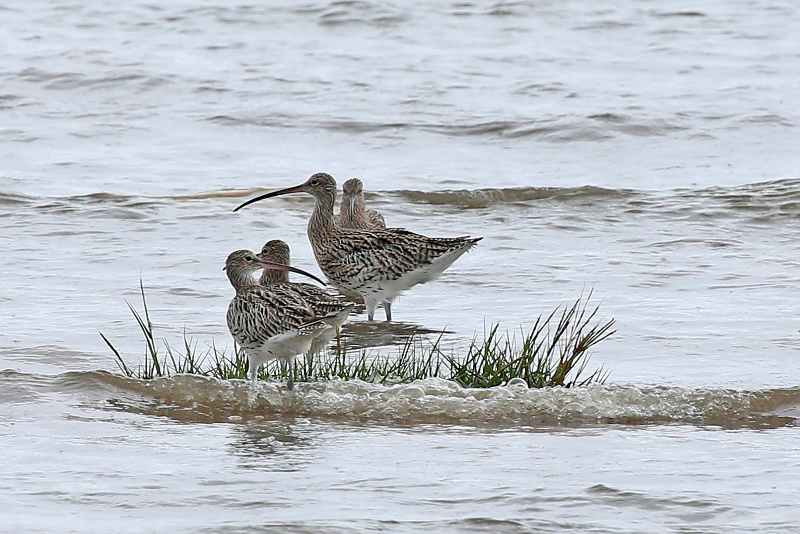
In 2019/20 the Dee Estuary was the third most
important site in the country for Curlews with a max count of 3,360 -
just ahead of the Thames Estuary on 3,148 and below the Wash with 6,903
and Morecambe Bay with 8,577. Over the 50 years of WeBS (Wetland Bird
Survey) that top four order of sites of importance hasn't changed,
apart from the Thames and the Dee swapping third and fourth place every
few years.
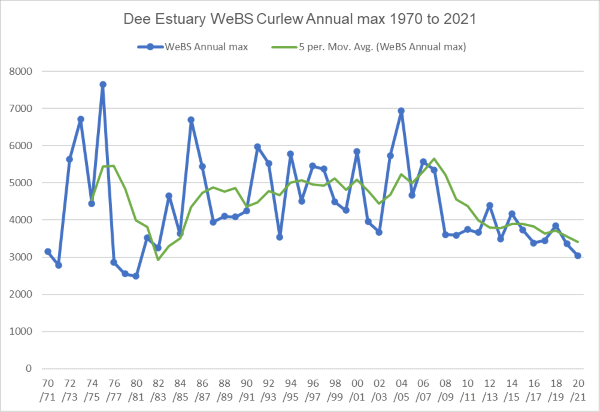
Despite quite big variations in the year to year
maximum the trend shown in the above graph is similar to the national
trend. After an initial drop in numbers in the 1970s the shooting ban
in 1981 led to a sharp increase through the 1980s followed by a
plateauing out. Nationally, a decline set in right at the beginning of
this century whilst on the Dee a decrease in counts wasn't really
apparent until around 2008. The decline in numbers are thought to be
due to two factors - firstly it reflects the poor breeding productivity
over the past several decades* and, secondly, it is thought that some
continental breeding birds are short-stopping due to the milder
winters, and it seems that Curlew counts on the Waddensea have remained
steady, or even increased, during the period of decline in the UK.
* the decline in
breeding productivity, particularly very poor chick survival, is
thought to be mainly due to habitat change because of intensive
farming. Adult survival appears to be good.

The Mersey Estuary has always had less Curlews than
the Dee but most years counts are still of national importance. The
current five year average (2019/20) is 1,502 and higher than the Great
Britain threshold of 1,200. Year to year counts on the Mersey tend to
be more erratic than on the Dee but the overall trend is similar, apart
from an unexpected peak from 2013 to 2016. One thing that is obvious
and worrying for both estuaries is the downward trend of the past
few years.
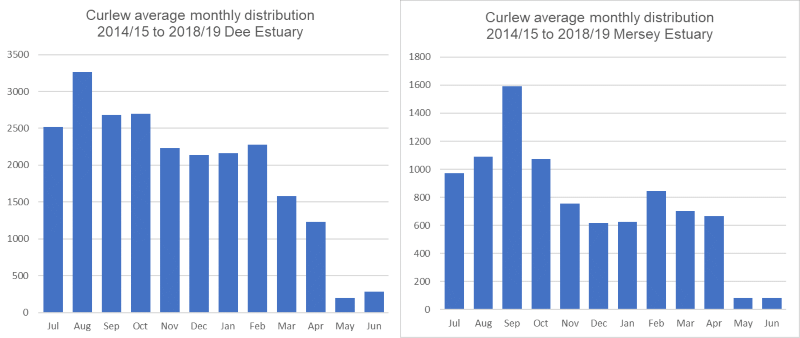
The average monthly distributions for both estuaries
are similar to each other and to the national average distribution.
There is a double peak, one in autumn and another in late winter, and
the mid-winter dip is likely due to birds moving either west to Ireland
or further south before returning in February. However, these charts
showing the average does disguise some quite big year to year
differences, particularly on the Mersey. For example, in September 2014
2,436 were on the Mersey whereas less than half that number were
present in September 2018 (1,171). April counts are even more
variable with 1,460 in April 2016 but only 106 in April 2019. As
British breeding birds will be on territory in April these Curlew will
be continental breeders which presumably are passing through quite
quickly and thus the peak passage is not always picked up by the WeBS
count.
Inland Roosts
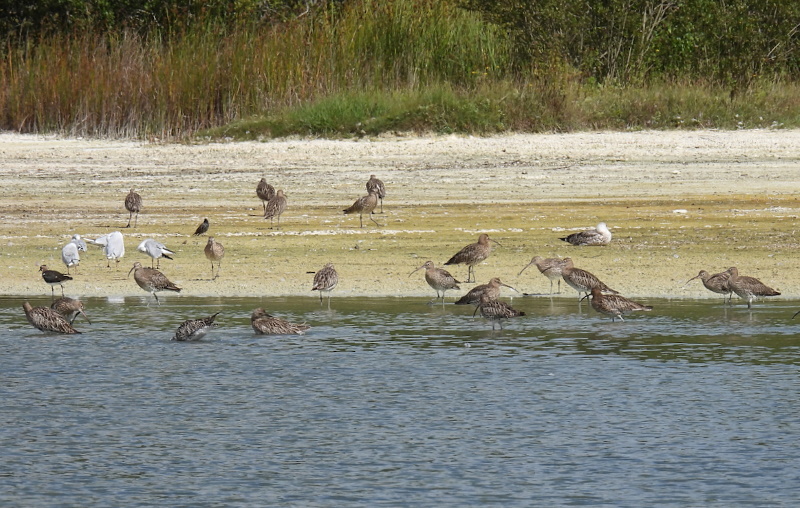
It was Dennis Elphick, writing in the Wader Study
Group Bulletin in 1979, who first drew our attention to the fact that
several hundred Curlews spend their whole time inland in the middle of
Cheshire during the non-breeding season. Having recently moved into the
area he was intrigued by the flocks he saw feeding in the fields and
eventually tracked down where they were roosting. This wasn't easy as
the Curlews had chosen a lime-bed complex used by ICI which was not
visible from adjacent roads and permits had to be sought to get in.
More than 40 years later the Curlews are still using exactly the same
site although the lime-beds have been converted to some great nature
reserves - namely Neumann's and Ashton's Flashes.
Curlews currently use several roost sites but the
main three are the Neumann's and Ashton's Flashes, Rudheath Lime Beds
and Acre Nook Sand Quarry.
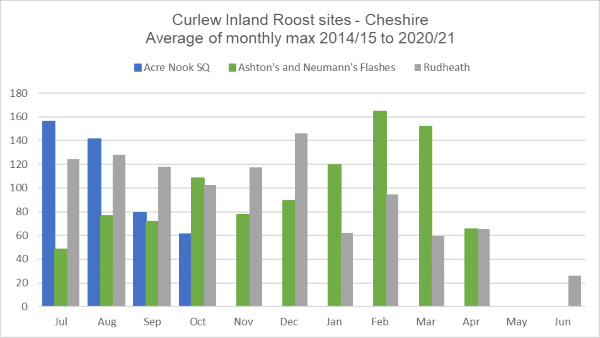
The bar chart shows the average monthly
distributions for the past seven years for these three sites. It is
interesting that the sites seem to have different distributions with
that of Acre Nook SQ only used from July to October. That may be
suggesting that it is particularly attractive to local birds (i.e.
those breeding on the Pennines) as a first stop after breeding, which
then move on before winter - but we don't really know.
Max counts this century have been: 292 at Acre Nook SQ on
19/09/2006;
420 at Ashton's and Neumann's Flashes on 28/11/2010; 266 at Rudheath
Lime Beds in December 2020. Numbers are likely to be under estimates as
many Curlews using these roosts are likely to fly in after dusk and fly
out at first light when few, if any, birders are present to count them.
Movements and Migration
I used to assume that most of the Curlews I was
seeing on the Dee Estuary were birds which had flown down from the
fells of the Pennines where they had bred. But that was until the past
few years when we have recorded two Curlews
colour-ringed in Finland and it turns out that large numbers
migrate to this country from the continent, and in particular Finland
where the breeding population is thought to be stable, perhaps
increasing, at around 80,000
pairs. Take a look below at the map from the new Migration Atlas, the
large number of lines can be confusing at first but what is obvious is
the very strong north-east to south-west movement (the different
colours just reflect different areas within Europe where Curlew have
been ringed).
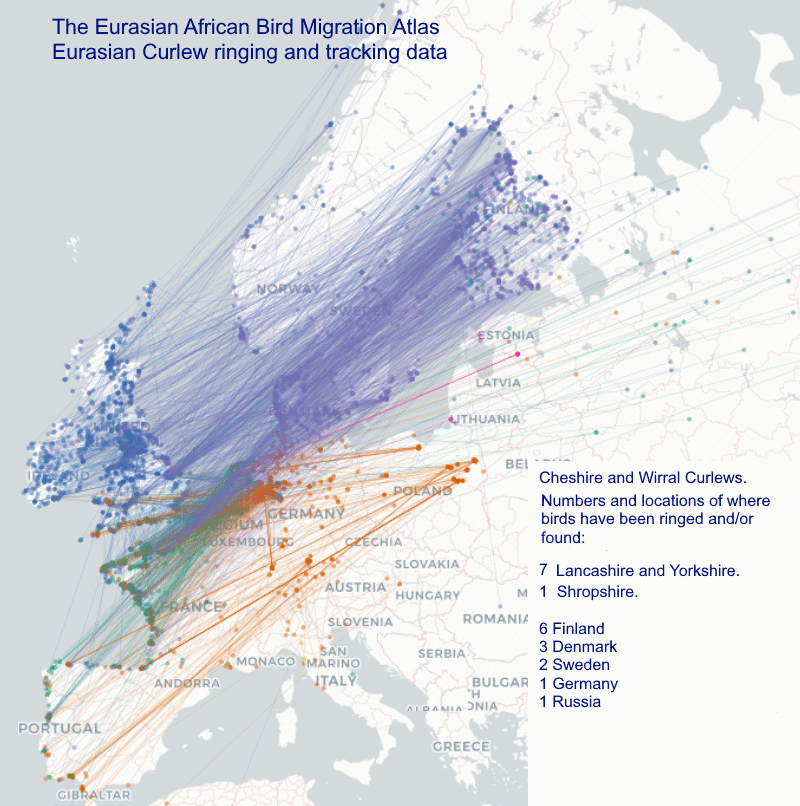
As shown in the table inset in the map there have
been a total of 21 Curlews which have either been ringed in Cheshire
and Wirral and found elsewhere, or ringed elsewhere and found here.
That is over a period of around 60 years so is a very small sample but,
compared with figures for the whole country, it seems to give us a
surprisingly reasonable guesstimate of where our birds come from. Seven
from Lancashire and Yorkshire are likely to be birds breeding on the
Pennines, and one is from Shropshire where a smaller number of
birds breed. For the whole of the British Isles birds from Finland
comprise almost 40% of the total ringing recoveries and for Cheshire
and Wirral those from Finland comprise 46% of 'foreign' birds - a good
correlation given the small sample. The breeding population in
Denmark is small so those Curlew recorded there were probably ones
which were flying to
or from Sweden or Finland. Germany does have a sizable population so
one from there is not unexpected, Russia also has a large number of
breeding birds although most fly much further south of the British
Isles to spend the winter and the one recorded near Smolensk in April
2002 (ringed in Lostock Gralam in Feb 1981) is one of only 17 from the
UK found in Russia.
Another way of trying to understand where our
Curlews come from is to look at the monthly distributions, particularly
that for the larger number which visit the Dee Estuary. Females leave
the nesting area in June leaving males to look after the young, but we
don't see any significant arrival of returning birds until right at the
end of June and into July - and these are just as likely to be those
from the continent as from northern England. It is said that some
British breeding birds move south for the winter although ringing
evidence for that is rather sparse. Certainly a lot move further west
to Ireland. Trying to interpret the lines on the Migration Atlas map is
not easy but it seems to me that most of the ringing returns in Ireland
come from breeding areas within the UK (particularly the Pennines) so
that suggests UK breeding birds are more likely to migrate to Ireland
rather than continental breeding birds. By March, most British breeding
birds will be on territory so those Curlew recorded in March and April
on our estuaries will be moving further east to breed, mainly to
Finland. A look at the Dee Estuary distribution for April, likely to be
all continental breeders, shows over half the number present in
February - so a reasonable estimate of the ratio of British to
Continental breeders on our estuaries would be approximately 1:1.2.
Final Comments
There's no doubting that the situation in some areas
of the Curlew's range is pretty dire - the island of Ireland being an
extreme example. Steep declines in lowland England as well as in Wales
and
Scotland are also very worrying. Poor chick survival is the main driver
of this decline and currently a lot of research is being carried out in
order to find out the precise causes in order to reverse it. In the
meantime the chicks are being given a helping hand by schemes such as
headstarting although that can only ever be a temporary solution.
However, there is some cause for optimism. Curlews
breeding in northern England seem to be maintaining their numbers
whilst in Finland, the most important country for this species,
breeding numbers may actually have increased in recent years. Ringing
shows that these two areas are the source for most of the birds which
spend their time in Cheshire and Wirral from July to April so,
hopefully, we can enjoy the sight and sound of these magnificent birds
for many years to come.

References:
1. Curlew Recovery Partnership England, https://www.curlewrecovery.org/.
2. David Brown et al., The Eurasian Curlew - the most pressing bird conservation priority in the UK? , British Birds November 2015 (vol 108).
3. David Norman, Birds in Cheshire and Wirral (a
breeding and wintering Atlas), Liverpool University Press, 2008.
4. Cheshire and Wirral Bird Reports (various 2000 to
2020), CAWOS.
5. Records database maintained by CAWOS.
6. Breeding Bird Survey Report 2021, BTO.
https://www.bto.org/our-science/publications/breeding-bird-survey-report/breeding-bird-survey-2021
7. Wetland Bird Survey on-line reports - https://app.bto.org/webs-reporting/numbers.jsp.
8. Kleefstra R, et al., Migratory birds in: Wadden
Sea Quality Status Report (2022),
https://qsr.waddensea-worldheritage.org/reports/migratory-birds.
9. Dennis Elphick, An inland flock of Curlews Numenius arquata in mid-Cheshire, England, Wader Study Group Bulletin 26: 31-35 (1979).
10. The Eurasian African Bird Migration Atlas
(2022), https://migrationatlas.org/.
11. Call of the Curlew Website, Conserving breeding Curlews in southern and lowland Britain, https://www.curlewcall.org/
Further Reading:
For those wanting to know more about Curlews and
what is being done to try and reverse their decline I can't recommend
these two websites too highly. Graham Appleton's Wadertales Blog is a
mine of information about waders generally - just put in the search box
the species name you want to read about. There have been several
articles about Curlews written in 2022.
The Curlew Recovery Partnership was launched in 2021 and is an umbrella
organisation providing co-ordination and support to those engaged in
Curlew conservation and has been set up with financial support from
Defra. Their website is crammed full of information about Curlews and
the work being done to help them.
1. Graham Appleton, Wadertales Blog. https://wadertales.wordpress.com/.
2. Curlew Recovery Partnership England, https://www.curlewrecovery.org/.
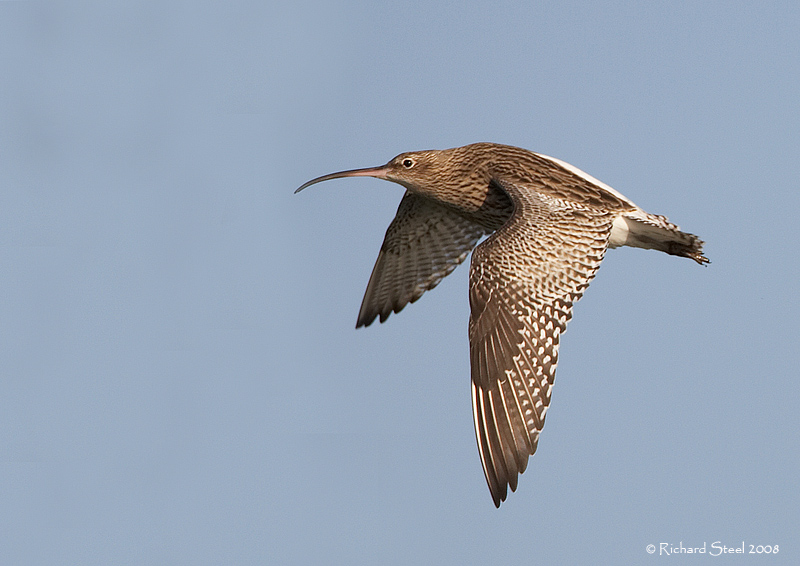
Richard Smith
Colour Ring Report
Shelducks
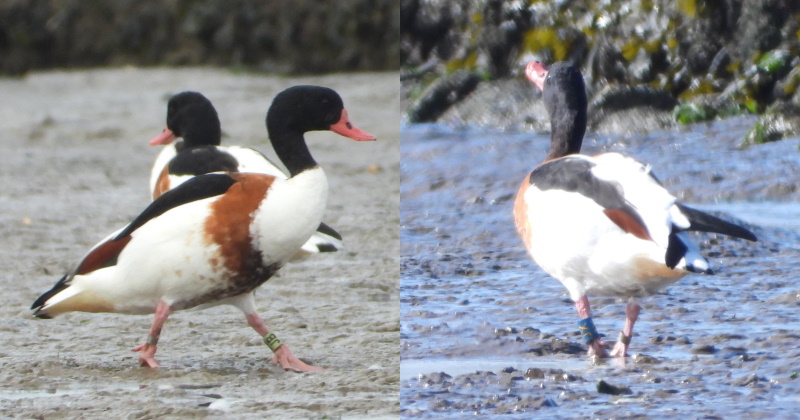
© Richard Smith
September
was something of a colour-ringed Shelduck bonanza for us with 39
records of 31 birds. Most Shelduck stay well out in the middle of the
estuary, mostly on Dawpool Bank, so well out of ring reading range.
But early morning some come closer to bathe and drink from freshwater
streams and that's when most of our rings were read. Ten of the
Shelduck we've seen in previous years and it's not unusual to see the
same bird in the same place on almost exactly the same date year after
year.
The Shelduck were ringed at the following locations:
22 at WWT Martin Mere, Lancs.
3 at Ribble Estuary Marshes.
4 at Lower Derwent Valley, Yorkshire.
2 at Seaton
Marshes, Axmouth, south Devon.
Below are details of some particularly interesting
ones.

between Martin Mere and the Ribble Estuary in June and July 2021 © Richard Smith
Ros Green, who is studying Shelducks for a PhD (see https://shelducks.co.uk/),
said about this one:
"Blue JN was one of the birds we tagged at Martin Mere last year. She
was caught in one of the nest boxes (15/6/2021), and was incubating 10
eggs. These all hatched, and she was seen with her partner (Lime J6)
and the tiny ducklings on the 5th July in Martin Mere grounds. She made
a brief return trip to the Ribble Estuary on the 9th July, and then
again on the 16th July when she shed her tag. Therefore I never got to
see where she migrated to moult. It’s great to know she’s still doing
well, and that she does move to the Dee."
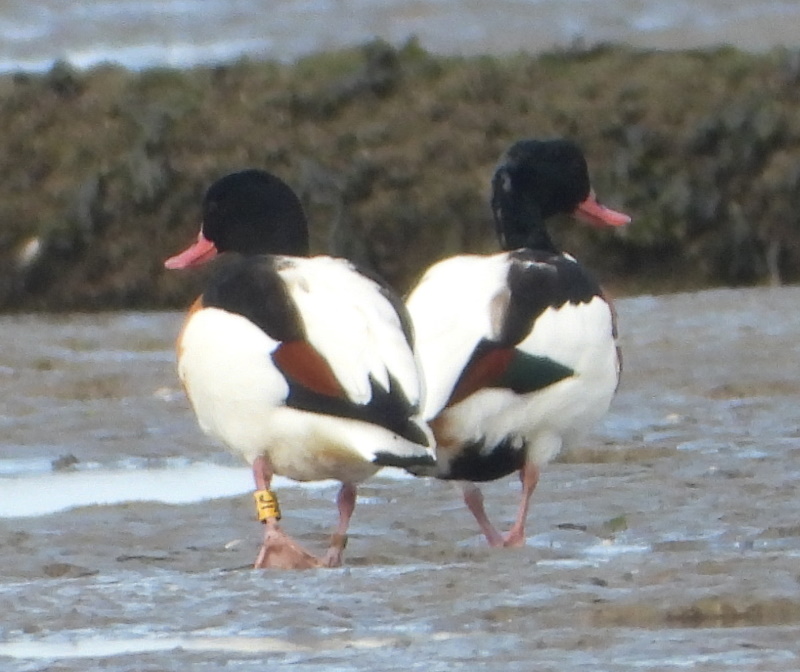
Our first two Shelducks sporting a
Yellow ring were recorded in September - A35 and JC (photo of JC
above). It turns out these were ringed on the Axe Estuary on the south
coast of Devon and our first ringed Shelduck from the south coast.
Yellow JC was first ringed in 2008 and has been recorded on the Axe
nearly every winter since, always between November and April. Yellow A
35 was ringed in February 2019 and was seen again on the Axe in
February and March this year. Before September neither bird had been
recorded away from the Axe Estuary.
Ian Stanbridge, the ringer, said this when we sent
him the Yellow A35 sighting:
"It is a very interesting record. We have good numbers at the
Wetlands in the winter and some birds stay and are seen throughout the
summer, but many move on either during the breeding season or for moult
and we have found it difficult to find out where they go. We have
some interesting records, including birds in Ireland, France,
Netherlands and Germany, but most of our records outside of the area
are in Bridgewater Bay, where one or two are recorded most years now,
with a group of watchers who spot them for us. We have two
records in north-east England, one from Gateshead (Shibon Pond) from
2015 and one from Seaton Carew in June 2012, so both East Coast
birds. We don’t, until now, have any West coast records north of
Bridgewater Bay other than an Irish bird, so thank you very much for
the record."
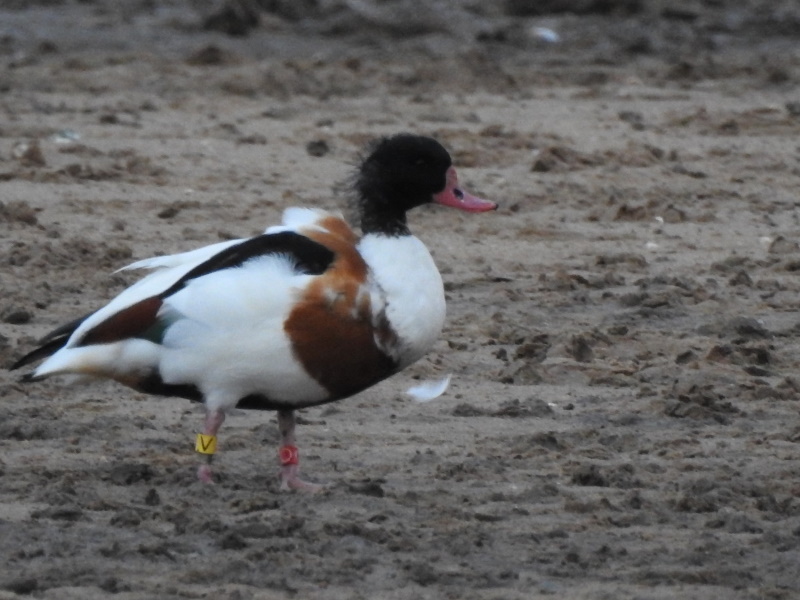
Four Shelducks ringed in the Lower Derwent Valley NNR were seen at
Thurstaston in August and September this year, including Red O / Yellow
V shown in the photo above. We've now recorded a total of 13 colour
ringed Shelducks from this area over the past three years which shows a
very interesting east to west movement. These birds breed in the LDV
and then move west to moult on the Dee and Mersey Estuaries. Right at
the end of September one of these Shelducks was recorded at Thurstaston
with a Black ring enscribed with the letters "ST". We knew that it must
have been quite an old bird as they haven't used black rings for
several years, and this is what the ringer, Craig Ralston, had to say:
"It was ringed as a duckling, 1 of a brood of 5, at North Duffield
Carrs in the Lower Derwent Valley NNR on 17/06/07, making this bird
just over 15 and a half years and of known age – which is really
valuable. Amazingly, this is the first resighting of this bird
away from the valley since it fledged – so who knows where its been
hiding all this time – perhaps further out on the mud flats! This is
the second oldest bird we have recorded – we have just set a new BTO
longevity record for a bird we ringed here in June 2001 as a duckling
and recorded here back in May as a presumed local breeding bird.
So a great record – thank you."
Redshanks
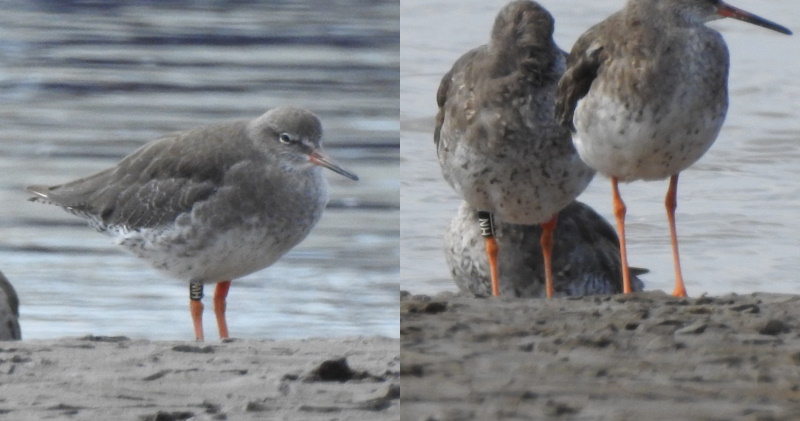
Three colour-ringed Redshanks were recorded at Heswall between the last week of August and the end of September. All ringed by our friends the Mid-Wales Ringing Group.
Black HN.
Ringed with metal ring at Llanrystud (south of Aberystwyth) on
10/02/2016
Fitted with colour rings at Llanrystud (south of Aberystwyth) on
23/01/2019
Black HW.
Ringed at Ynyslas (south of Aberdyfi) on 24/01/2019.
Black AAJ.
Ringed at Ynyslas (south of Aberdyfi) on 14/09/2019.
Mediterranean Gull

Left: © Richard Smith Right: © Richard Speechley
PKN1/PLLN
I well remember scanning through the gull flock at Thurstaston in July
last year and being very frustrated with a red ring on a Med Gull which
I couldn't read as it was very faded. Nevertheless, I took some photos
and with much enhanchment using my graphics app I could just make out
the characters - PKN1. I was pleased because it turned out to have an
interesting history but I knew it was very unlikely that I would be
able to read it again.
When Richard Speechley sent me a photo he'd taken of one at West Kirby
in early September it was good to be able to easily read the ring even
though it was quite a distance away. I was a bit puzzled when we got
the feedback from Poland before I realised that the ringer in Poland,
Tomass Iciek, had put a brand new ring on the same bird (old ring PKN1,
new ring PLLN) in May
whilst it was
breeding!
The history for this bird below:
Ringed as a chick at Zdziezowice, just west of
Katowice, Poland, in May 2018.
Recorded at:
Belfast, August 2018.
Near Cadiz, Spain, February 2019.
Camel Estuary, Cornwall, June 2019.
Thurstaston shore, July 2021.
Hilbre, October 2021.
Milkowice, Dobra, (just west of Lodz), Poland, in May 2022 - where it
had a new ring fitted.
West Kirby, September 2022.
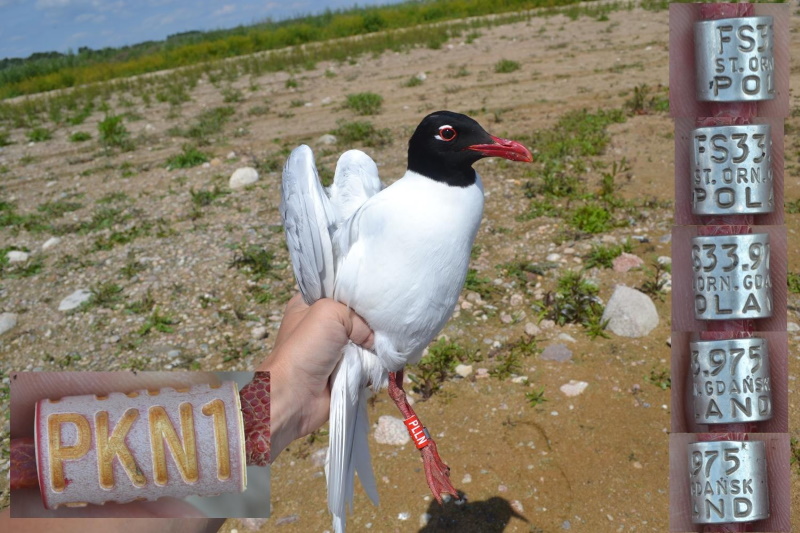
Colour Rings were recorded by Richard Smith, Stephen
Hinde, Richard Speechley, Alan Hitchmough and Tony Ormond.
Richard Smith
September Bird News
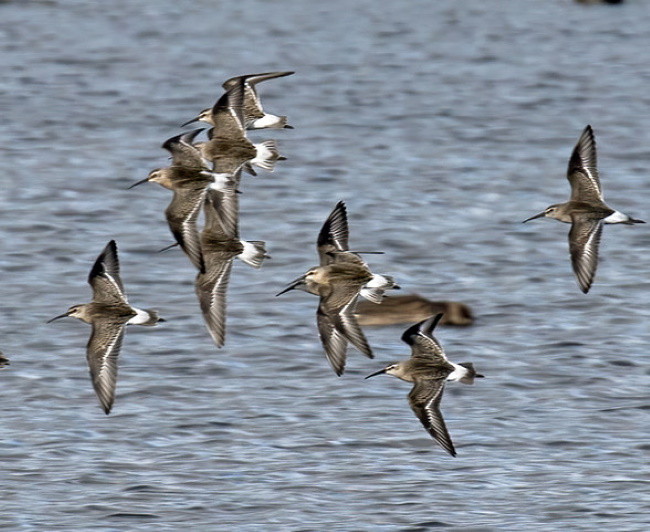
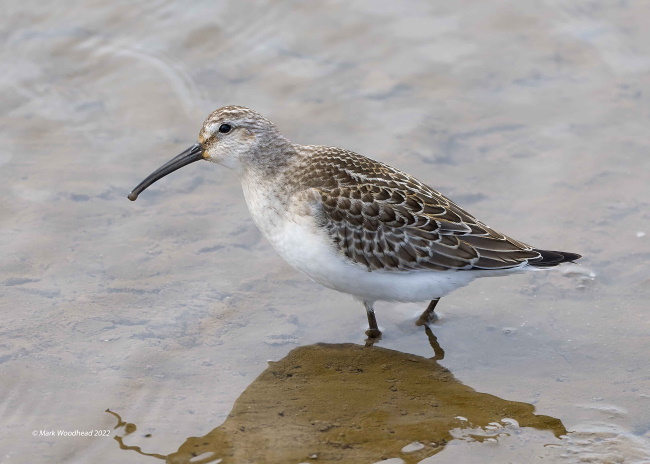
September was very much a Curlew Sandpiper month and
numbers at Burton Mere Wetlands were at record numbers. Two were
present on the 1st then quickly increased to 15 by the 5th, 30 on the
10th and peaked at 39 on the 11th. Smaller numbers were recorded
elsewhere including at least five at Hilbre on the 2nd, nine at West
Kirby on the 9th and five at Oakenholt on the 25th. I'll be writing an
article about this influx, and how it compares to previous years, in my
next newsletter.
There were several reports of Little Stints
including one that lingered at Parkgate for a week, two at Hoylake and
three at Burton Mere Wetlands. Six Greenshanks was a good number for
Hilbre on the 2nd and they reached a max of 23 at Parkgate on the 8th.
The Dee Estuary is the most important site in the country for Redshanks
so it was no surprise to count 4490 at Heswall on the 11th, an
impressive sight.
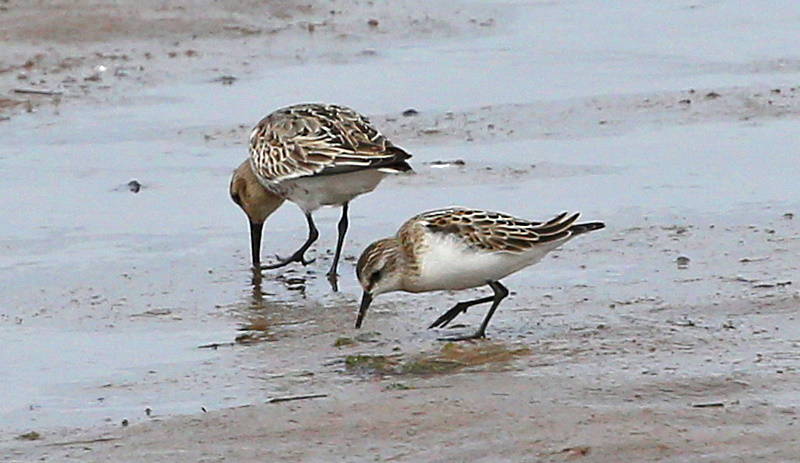
Since 2010 Pink-footed Geese have increased exponentially on the Dee
Estuary and now regularly reach in excess of 20,000 over the winter.
This autumn the first ones were spotted on the 13th and over the
following couple of weeks flocks of several hundred were being recorded
- a glorious sight.
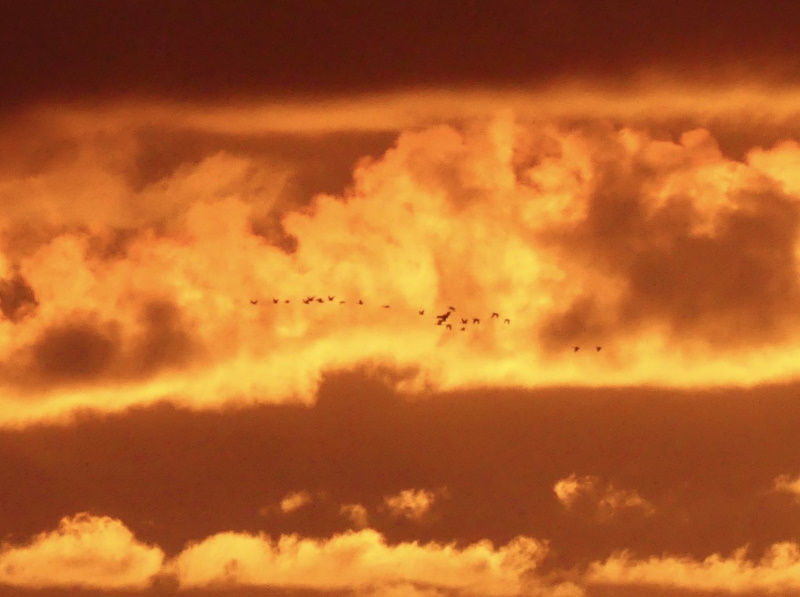
Strong north-westerly winds on the 26th and 27th
blew in some good sea-birds including a total of 11 Leach's Petrels on
the 26th and five on the 27th. There were also a couple of Grey
Phalaropes, a few Manx Shearwaters, a couple of Arctic Skuas and a
single Great Skua. It was great to see these but disappointing that
numbers weren't higher.
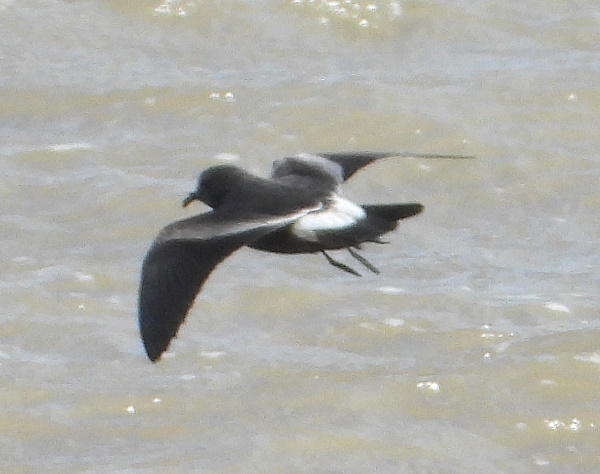
Good numbers of Spoonbills are usually expected in September and we had
record numbers this year. 12 at Burton in 2016 was the previous record
so it was good to see 12 at Parkgate and four at Burton Mere Wetlands
on the 7th (counted at the same time) followed by a total of 19 on the
9th.
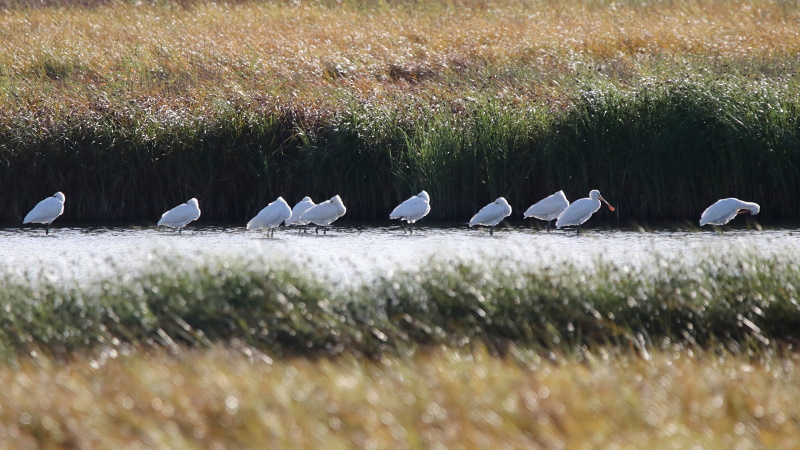
Just three reports of Hobbies this month but I had
to show this superb photo, below, of one flying over Burton Point. An
Osprey lingered around the West Kirby area on the 5th and 6th and one
on the 7th over Burton Mere Wetlands may have been the same one. The
only Hen Harrier of the month was a ringtail seen at Burton Mere
Wetlands on the 23rd.
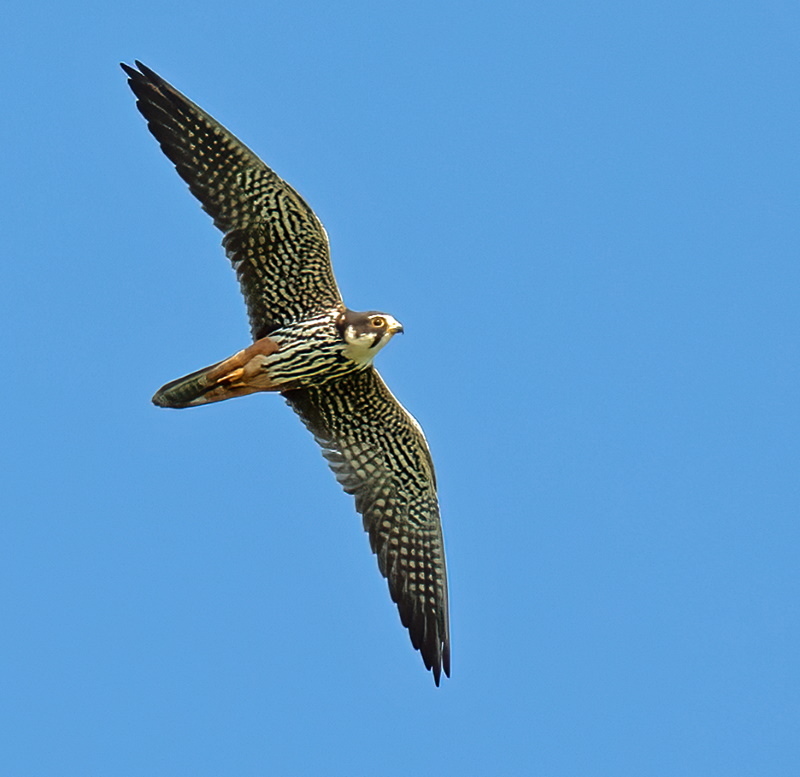
What to expect in October
A lot of birds are on the move in October and if
conditions are right - a light to moderate south easterly wind, cloud
cover and preferably with some slight morning mist - then visible
migration can be spectacular. Early morning along the coast is best and
expect to see flock after flock of Redwings, Fieldfares, Starlings and
various finches including Chaffinches and Siskins. With these flocks we
should get our first Snow Buntings arriving, usually just one or two
birds along north Wirral, Point of Ayr or Gronant. A nice rarity
to look out for this month are Yellow-browed Warblers, 2021 was a poor
year for them but sometimes we can get them in double figures.
On the marshes thousands of Pink-footed Geese will have arrived and it is an amazing sight to see these flying into roost at Burton. Also look out for Marsh and Hen Harriers and both Cattle and Great Egrets.
Out to sea north-westerly gales can blow in Leach's
Petrels, Grey Phalaropes, Sabine's Gulls and skuas. In calmer
conditions look out for Common Scoters out in Liverpool Bay which
should be present in their thousands.
Forthcoming Events
October Highest Spring Tides (Liverpool)
Also see Tides page.
10th October, 12.14hrs (BST), 9.5m.
11th October, 12.48hrs (BST), 9.5m
26th October, 12.19hrs (BST), 9.5m.
27th October, 12.55hrs (BST), 9.6m.
28th October, 13.34hrs (BST), 9.5m.
Forthcoming Events
See events at https://events.rspb.org.uk/deeestuary